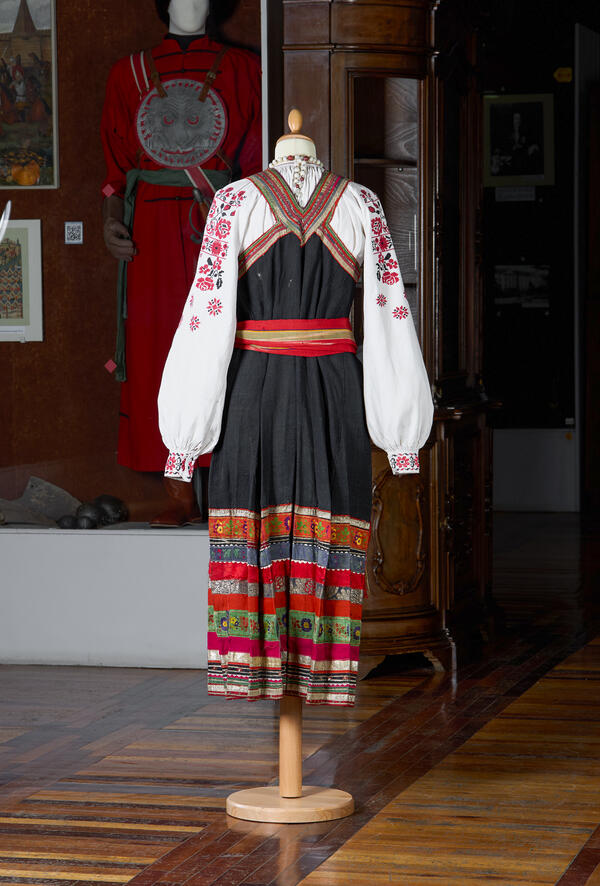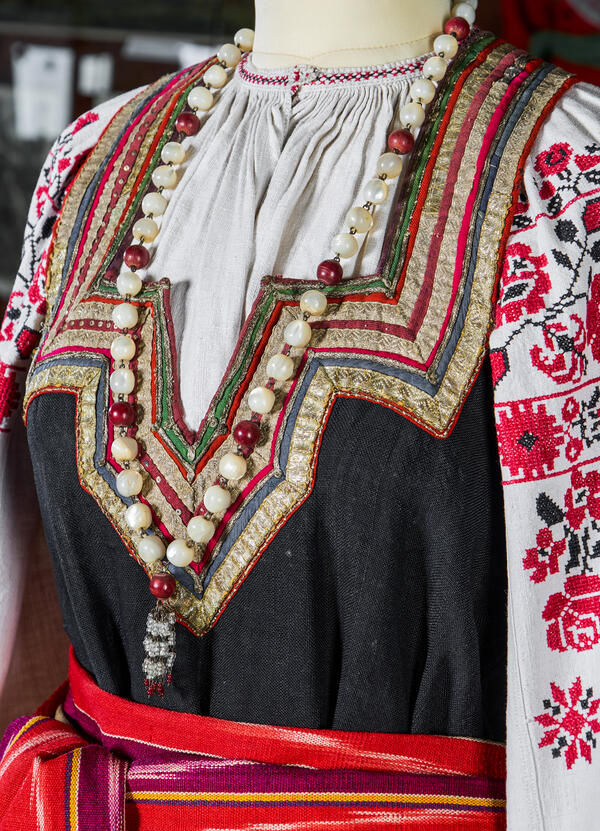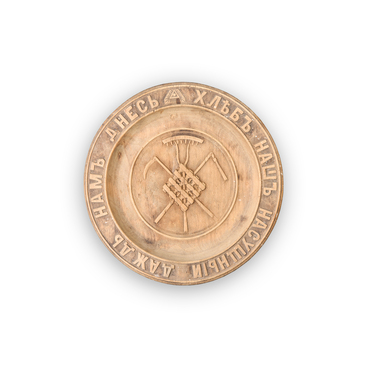The festive peasant women’s costume of the Belgorod region was formed under the influence of various national and ethnic traditions, as well as natural and social factors.
Women’s clothing was multilayered, with each detail holding its own secret meaning. The festive women’s costume consisted of a shirt, sarafan, belt, velvet headdress (barhatnik), festive chest jewelry, and shoes.
The basis of the costume was an ankle-length shirt, which was sewn from a single piece of bleached homespun canvas. The shirt had set-in sleeves gathered at the cuffs. The collar of the shirt was also gathered. There was a long straight slit at the chest of the shirt, which, like the sleeves, could be fastened with a button. The hem of the shirt was trimmed with red braid. The shoulders of the sleeves were decorated with embroidery of red and black colors, featuring floral patterns.
Along with the shirt, women wore a sarafan, which came to the Belgorod region together with settlers from Moscow and other central Russian lands. The sarafan was made of black homespun canvas, dyed with elderberry juice. The finished sarafan was cut on the bias, made with a closed neck, with straps crossing at the back. The festive sarafan was pleated into large folds, which the craftswomen fixed with hot bread and decorated with expensive purchased silk ribbons.
The sarafan was belted with a “Korensk” striped waist belt, more often red and green, and tied around the middle of the body, slightly shifted to the left.
Festive footwear, common in the Belgorod region, were heavy leather shoes called chereviki, with a low wide heel which was decorated with a pattern of small carnations and reinforced with a copper heel plate. Thick, stiff leather and durable horseshoes made it possible to wear chereviki over stockings in wet weather and during winter. Like bast shoes, they were tied below the knee with laces threaded through loops sewn to the back.







